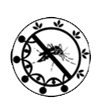Vector Surveillance
Vector Surveillance is the analysis and interpretation of systematically collected entomological data for facilitating appropriate decisions on vector control. Vector surveillance is an important and essential component of the dengue control programme, as the information generated from vector surveillance guides the vector control programme and helps for early warning and epidemic forecasting.
Objectives of Dengue Vector Surveillance
- To determine the breeding sites of dengue vector mosquitoes
- To describe the temporal and spatial distribution of vector mosquitoes
- To describe seasonal fluctuations of vector population
- To determine feeding and resting habits of vector mosquitoes (vector bionomics/ behaviour)
- To forecast outbreaks and early warning
- To determine the effectiveness of vector control interventions used for dengue vector control
Types of Dengue Vector Surveillance
Dengue vector surveillance is carried out regularly at sentinel sites and or routine sites. Surveillance at spots (spot checks) is carried out in special localities and circumstances based on environmental and epidemiological information.
Vector Surveillance System in The Country
Vector surveillance is carried out by the NDCU in cooperation with Anti Malaria Campaign (AMC), Anti Filariasis Campaign (AFC) and Medical Research Institute (MRI). In addition to central level offices, these institutions have their district level offices headed by Regional Malaria/ Medical officers (RMOO), Medical officers of AFC or Entomologist who are responsible for planning, implementation, monitoring and evaluation of entomological surveillance at the district level. Currently, 172 entomological teams are deployed for entomological surveillance at the central and district level offices of the AMC, AFC and MRI.
Integrated vector management (IVM)
Dengue vector control measures are aimed at both immature and adult stages of Ae. aegypti and Ae. albopictus. These measures are included in the Integrated Vector Management (IVM) strategy which incorporates environmental, biological and chemical methods.
Integrated vector management is a rational decision-making process for the optimal use of resources for vector control. IVM uses the available resources, existing health system and evidence based appropriate vector control interventions singly or in combination to suppress the vector population. Key elements of IVM strategy are mentioned in Table 1.
| No. | Key Element | Description |
| 1 | Advocacy, social mobilization and legislation | ● Promotion and embedding of IVM principles in designing policies in all relevant agencies, organizations and civil society |
| ● establishment or strengthening of regulatory and legislative controls for public health | ||
| ● empowerment of communities | ||
| 2 | Collaboration within the health sector and with other sectors (inter and intra- sectoral collaboration) | ● Consideration of collaboration within and between public and private sectors including the engagement with local communities and other stakeholders; application of the principles of subsidiarity in planning and decision-making; strengthening channels of communication among policy-makers, vector-borne disease control programme managers and other IVM partners |
| 3 | Integrated approach | ● Ensure rational use of available resources by addressing several diseases, integrating non-chemical and chemical vector control methods and integrating with other disease control methods; use of a range of interventions, often in combination and synergistically. |
| 4 | Evidence-based decision making | ● Adaptation of vector control strategies and interventions guided by the knowledge of local vector biology, bionomics and ecology, disease epidemiology and resources, and subject to routine monitoring and evaluation. |
| 5 | Capacity-building | ● Provision of the essential material infrastructure, financial resources and human resources at national and local level to manage IVM strategies on the basis of situational analysis. |
Dengue Vector Control Interventions in Sri Lanka
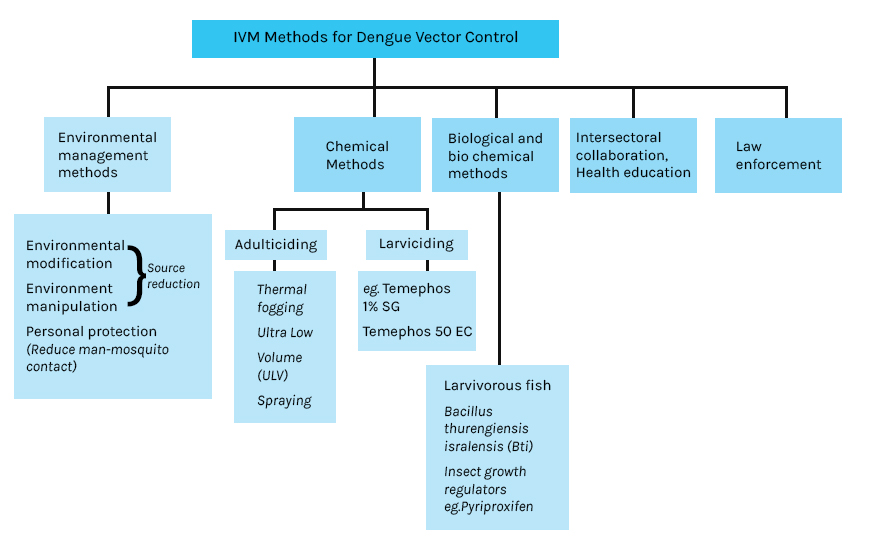
Environmental Management Methods
Environmental management seeks to change the environment in order to prevent or minimize vector propagation and human contact with the vector-pathogen by destroying, altering, removing or recycling non-essential containers that provide larval habitats. Such actions should be the mainstay of dengue vector control. Three types of environmental management are defined:
a. Environmental modification : Environmental modification includes long-lasting physical transformation of vector breeding habitats to eliminate and/ or prevent mosquito breeding.
For example,
- Providing continuous water supply to minimize storage of water in cement tanks, barrels, and other containers in areas with irregular water supply
- Mosquito-proofing of water storage cement tanks, domestic wells and overhead tanks/cisterns permanently
- Construction of buildings without roof gutters.
- Removal of unserviceable roof gutters.
- Removal of unwanted cement tanks.
- Use of mosquito proof plastic overhead tanks instead of open tanks.
- Removal of unnecessary plants that hold water.
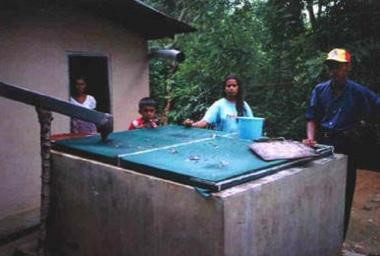
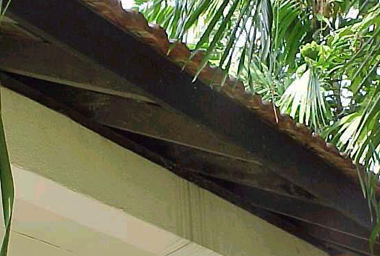
b. Environmental manipulation : Environmental manipulation involves temporary changes in vector habitats to prevent or reduce mosquito breeding. The effects of environmental manipulation is short term, thus, such type of activities needs repeated application.
For example,
- Regular cleaning with scrubbing of water storage tanks, flower pots, flower vases, ant-traps, refrigerator trays etc.
- Application of larvivorous fish, Bti and temephos 1% sand granules to the non-potable water storage containers and application of salt or oil to ant traps.
- Proper draining of cement lined drains, water collections on cement floors and concrete slabs and periodic cleaning of roof gutters.
- Proper disposal of solid waste by reducing, reusing and recycling of discarded receptacles.
- Proper storage of used tyres, household and garden utensils under a shade.
- End capping or filling the cavities of iron/ galvanized poles by cement or soil.
- Cutting bamboo at the nodes or filling bamboo stumps and tree holes with sand or cement.
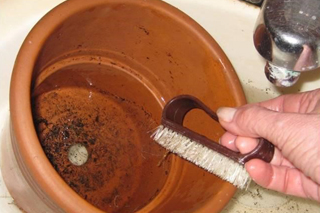

Potential environmental measures that can be taken for the control of Ae. aegypti and Ae. albopictus larvae in different types of breeding sites are given in Table 2
| | Breeding site | Scrub empty, clean weekly | Mosquito proof cover | Store under roof | Modify design/ remove | Fill sand/ soil/ cement | Reduce, reuse recycle Collect and dispose | Puncture or drain |
| 1 | Water storage cement tanks and barrels | + | + | + | ||||
| 2 | Discarded receptacles | + | ||||||
| 3 | Used tyres | + | + | + | ||||
| 4 | Inventory items in the institutions | + | ||||||
| 5 | Flower pots with saucers | + | ||||||
| 6 | Flower vases | + | ||||||
| 7 | Refrigerator trays | + | + | |||||
| 8 | Ant traps | + | ||||||
| 9 | Water collection on cement floors and roofs | + | + | |||||
| 10 | Roof gutters | + | + | |||||
| 11 | Bamboo stumps, tree holes | + | ||||||
| 12 | Plants with water holding leaf axils | + |
c. Personal Protection : Changes to human habitation or behaviour. Actions to reduce human–vector contact, such as installing mosquito screening on windows, doors and other entry points, and using mosquito nets while sleeping during daytime.
For example,
- Personal Protection/Physical barriers
- Screening doors and windows of houses/ premises using mosquito proof mesh
- Protective clothes to cover the body
- Curtains/ insecticide treated curtains
- Use of repellents
- Application of natural and chemical repellents such as citronella oil, lemon grass oil, neem oil and chemical repellents containing DEET (N, N-Diethyl-m-Toluamide). However, repellents have short term effect (½ - 10 hours).
Different premises/ institutions can have different mechanisms for dengue vector prevention and control. Potential dengue vector control measures for different types of premises are shown in Table 3
| | Type of premise | Recommended activity | Stakeholders |
| 1 | Living premises | Regular examination and elimination of breeding sites (eg. cleaning on every Sunday) and ensure no breeding sites | Households |
| 2 | Construction site | Inspections by the PHII/ MOH to ensure mosquito free environment eg. Cleaning, application of larvicides | Contractors (appointing inspection team), safety officers etc. |
| 3 | Schools | Establishing committees for cleaning environment Weekly cleaning (half an hour on Friday) | School principal/ Responsible teacher/ staff member, School Development Committees, Parents associations |
| 4 | Condominium | Weekly cleaning (Half an hour cleaning on every Sunday) Proper waste disposal | Condominium authorities, Cleaning services/ Municipal councils |
| 5 | Institutions/ Offices | Weekly cleaning (half an hour on Friday) | Head of the institutions, dengue committee members |
| 6 | Hospitals | Establish an active committee to look after the hospital environment Weekly cleaning (half an hour on Friday) | Director/ MS/ DMO/ MOIC and PHI’ Dengue committees |
| 7 | Bare lands/ abandoned lands | To trace owner and issue notices and ensure no vector breeding sites | Land owner, Local authority |
| 8 | Public places | Display notices and ensure no vector breeding sites | Local authority |
| 9 | Religious places | Clean weekly (Weekly cleaning (half an hour on Sunday) | Chief priest, Dayaka sabha, |
Biological and Bio-Chemical Methods for Dengue Vector Control
Biological vector control agents prey upon, parasitize and/ or compete with the target vector species and bio-chemical methods interfere with the development process of the vector species, thus, eliminating/reducing vector populations. Use of biological and bio-chemical agents for vector control avoids chemical contamination of the environment and reduces/averts development of resistance of vectors against insecticides. Larvivorous fish (biological), Bacillus thurengiensis isralensis (Bti) and insect growth regulators (bio-chemical) are used for dengue vector larval control in non-potable water-storage tanks and barrels, ornamental ponds and fountains.
Larvivorous fish
Poecilia reticulata (guppy), Aplocheilus spp (nalahandaya) Rasbora daniconius (dandi), juvenile stages of Tilapia spp (Orechromis mossambicus and O. niloticus) feed on mosquito larvae. These fish species can be used for dengue vector control in water storage tanks, barrels, ornamental ponds, fountains, cement lined drains and wells.
Larvivorous fish species suitable for dengue vector control

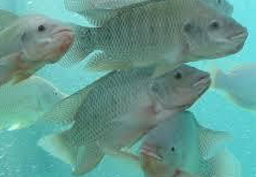

Limitations of use of larvivorous fish
- The fish die in the absence of food in the breeding site and due to changes in the pH and salinity in the breeding sites
- The fish die when the domestic water storage containers are refilled with chlorinated water.
Fish cannot tolerate high water temperature.




